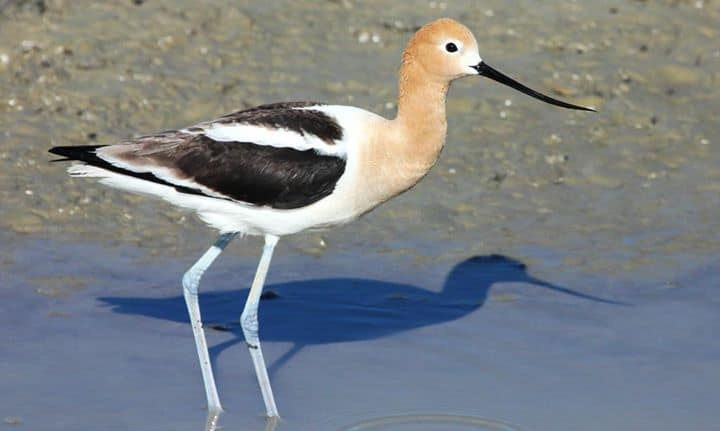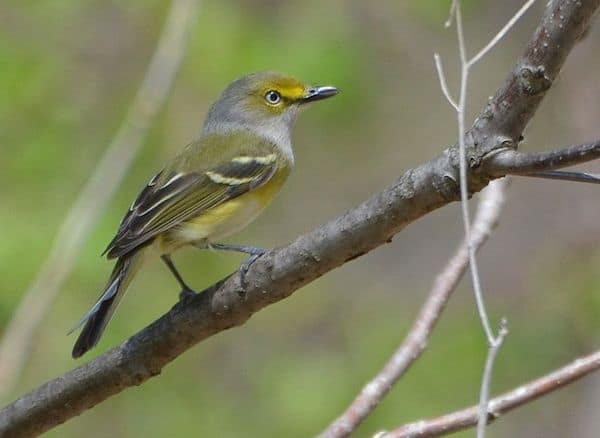Winter birds of Louisiana (December, January, February)
Next to the peak migrational months of April and October, it is the winter months which prove most attractive to Louisiana bird watchers, for there are more birds per unit area in the state in winter than at any other time. The weather during winter is at its best: cool, moist, often sunny, and only occasionally punctuated by cold snaps created by the passage of Pacific or Arctic fronts. Birds present during this time of the year originate from several different seasonal groups including year-round residents, neotropical migrants, and stray migrants from the western and southwestern U.S. and Mexico, along with miscellaneous “lingering” neotropical migrants from the eastern U.S.
Raptors such as red-tailed hawk, sharp-shinned hawk, and northern harrier are also abundant throughout the same agricultural habitats during winter. Many wading bird and shorebird species also choose to remain in Louisiana at this time. Especially abundant (again, in agricultural areas) are species such as great blue heron, great egret, white ibis, white-faced ibis, roseate spoonbill, black-bellied plover, black-necked stilt, American avocet, greater yellowlegs, lesser yellowlegs, western sandpiper, least sandpiper, dunlin, long-billed dowitcher, and Wilson’s snipe. Also abundantly present in agricultural habitats in the southern half of the state are species like pied-billed grebe, sora, American coot, laughing gull, ring-billed gull, gull-billed tern, and Forster’s tern.
Also within the southern half of the state is an amazing array of vagrant and lingering neotropical species from all over the U.S. and even Mexico. Each winter, many sightings of unusual species are recorded.
Perhaps the most intriguing “vagrant” and “lingering” bird reports emanate each winter predominately from urban areas along the Interstate-10 corridor and south, between Lake Charles and New Orleans, involving a number of western and southwestern U.S. hummingbird species which have apparently chosen to winter in south Louisiana as opposed to their traditional wintering grounds in southern Mexico. This winter hummingbird phenomenon was first documented in the 1950s, and has grown with each passing year. To date, 10 hummingbird species have been recorded from south Louisiana during the winter months, and a number of them including buff-bellied hummingbird, black-chinned hummingbird, Calliope hummingbird, broad-tailed hummingbird, and especially rufous hummingbird have become rather common sights each winter. Moreover, banding efforts have proven that many individuals of these species are actually returning to the same backyard each successive winter! Additional species which have turned up less frequently include blue-throated hummingbird, broad-billed hummingbird, Anna’s hummingbird, and Allen’s hummingbird. Presently, debate rages on as to the whys and wherefores regarding this phenomenon.
Regarding songbirds and other woodland birds, just about any wooded area in the state is alive with a combination of year round and migratory species throughout the winter. The woodland edges and hedgerows associated with agricultural areas are especially good for sparrows. Amazingly, some 12 to 16 species of sparrow are available for viewing during the winter months in Louisiana, with 6 to 8 species being commonly recorded from farm habitats by the average bird watcher on an average winter day.
Winter is the best season for backyard birding. Supplementing the usual group of year-round residents are migrants such as blue-headed vireo, ruby-crowned kinglet, cedar waxwing, orange-crowned warbler, yellow-rumped warbler, American robin, American goldfinch, pine siskin, and white-throated sparrow, among others. American goldfinches usually don’t show up at seed feeders until Thanksgiving or so, after the sweetgum seed—their favorite fall food source—has played out in the wild. Use black-oil sunflower and/or thistle seed for the goldfinches. Smaller millet-type seed will attract white-throated sparrow, along with other wintering sparrows, such as song sparrow, swamp sparrow, or even fox sparrow, that might occasionally show up at feeders.
Winter fruit sources are vitally important for attracting species such as woodpeckers, eastern bluebird, hermit thrush, American robin, cedar waxwing, yellow-rumped warbler, and white-throated sparrow, to mention a few. Most bird gardeners use various varieties of hollies, but hackberry is the undisputed winter fruit champion.





Thank you for this wonderful information. I’m hoping that you can provide me with exact locations for birding. Thank you.
Cindy Bozeman